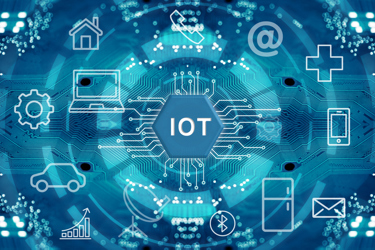Connecting IoT Devices: Q&A With Semtech
A conversation with Remi Lorrain, LoRaWAN Network Director at Semtech

Q: You worked with ABI Research on a white paper about connecting IoT devices. What were the main takeaways?
Lorrain: Semtech’s Wireless and Sensing Products Group recently commissioned a white paper from ABI Research titled, “LoRaWAN and Multi-RAN Architecture Connecting the Next Billion IoT Devices,” which explores the rapid growth of massive Internet of Things (IoT) connectivity and real-world applications leveraging Multi-Radio Access Network (RAN) architectures. To summarize, there are five main takeaways of the report:
- Multi-Radio Access Network strategy development is showing that no single technology can cover the diversity of IoT use cases.
- LoRaWAN is Key for Massive IoT Adoption: Vertical market evaluation was deeply covered in the white paper and ABI Research found that the LoRaWAN protocol is the leading license-exempt low-power wide-area (LPWA) network standard addressing massive IoT vertical markets. The market segments that were examined representing the greatest areas for IoT adoption include smart metering, smart cities, asset tracking and logistics, commercial building automation, as well as smart home applications.
- 5G and Non-cellular Network Technologies will Co-exist: There’s a common misconception that different connectivity options are incapable of being used in tandem; however, the ABI Research found that LoRaWAN and 5G will co-exist in the form of hybrid networks or multi-RAN architectures like cellular and Wi-Fi have done in the past. Similarly, the complementary nature of LoRaWAN and Wi-Fi is becoming evident in various IoT applications.
- Full 5G Will Take Longer Than Expected: 5G is not aiming to address massive IoT use cases in the near term. 5G networks and the device hardware supporting 3GPP Release 17 specifications will not be commercially available until early 2024 and it will still address the Broadband IoT Market segment.
- Rise in Satellite Connectivity Enabled in the LoRaWAN standard: Much of the Earth’s surface is not covered by terrestrial networks, so we’re hearing more and more about satellite connectivity options. The firm found that terrestrial networks using LoRaWAN will be complemented by multiple constellations of Low-Earth Orbiting (LEO) and Geostationary Orbiting (GEO) satellite-based LoRaWAN connectivity to provide ubiquitous global low power sensor to satellite (LP-S2S) connectivity.
Q: How is the asset tracking & logistics market impacted by the IoT?
Lorrain: Supply chain weaknesses have been front and center during the past year, pushing many industries to invest in smart technologies to replace siloed legacy systems with automated asset management solutions. IoT offers many benefits, one is its ability to monitor the location of inexpensive assets such as rolls or cartons and more expensive assets such as trailers, trucks, and shipping containers so that these assets will be readily available when needed and are not unused, lost or stolen.
T he IoT is also being used to monitor fleets of vehicles and drivers, and to integrate that with supply chain ERP systems to optimize capacity utilization and delivery times, with regards to corporate social responsibility duties such as the vehicle maintenance periods and driver rest periods. It also can be leveraged to monitor the health of engines or other equipment used in manufacturing and supply chain processes to enable predictive maintenance.
he IoT is also being used to monitor fleets of vehicles and drivers, and to integrate that with supply chain ERP systems to optimize capacity utilization and delivery times, with regards to corporate social responsibility duties such as the vehicle maintenance periods and driver rest periods. It also can be leveraged to monitor the health of engines or other equipment used in manufacturing and supply chain processes to enable predictive maintenance.
A use case identified in the white paper comes from French IoT device marker Ercogener, part of Groupe Zakat, which developed an end-to-end asset visibility solution for industrial assets using its EG-IoT 4E811 device. The solution operates with LoRaWAN and was implemented by France’s national state-owned railway company, SNCF, to provide real-time visibility of its assets.
Q: What other trends are having the biggest impact?
Lorrain: The global pandemic has had a huge impact on supply chain demands. From increased online shopping to prioritizing vaccine shipments, these disruptions and demands have helped companies identify areas where technology can create a more resilient and agile supply chain.
Different use cases in logistics have unique requirements. In some cases, power must be prioritized, so IoT technology that offers long-range and low power consumption qualities may be the right choice. In other scenarios in which long distances may not be traveled, battery life may be a lower priority for a customer, and so they may consider other types of IoT technologies. No matter the situation, IoT technologies can enable enterprises to affordably track assets throughout supply chains in combination with condition monitoring, like temperature, humidity, and shock.
My colleague, Marc, recently explored this in a separate Q&A for Field Technologies Online.
Q: How is the emergence of 5G affecting other connectivity solutions?
Lorrain: While there’s been a lot of 5G momentum recently, it is also important to note that 5G is still in the early stages. As noted in the research report, 5G networks will not be commercially available until early 2024. As 5G deployments increase, there also will be a rise in complementary technologies that offer low-power flexibility, cost-effective power, and low-bandwidth options for massive IoT deployments. Solutions like LPWA technology balance the strengths of 5G and provide a broader set of tools to support different use cases beyond low latency and high throughput applications.
Q: Any key statistics from the whitepaper we should be aware of?
Lorrain: The study concluded that Semtech’s LoRa devices will play an important role as a key LPWA network technology now and in the future as the IoT continues to connect physical devices to digital assets. According to the report, by 2026, LoRa is expected to be the leading non-cellular LPWA network technology and will account for more than one-fourth share of all LPWA network connections and more than half of all non-cellular LPWA connections. Total non-cellular LPWA connections in 2026 are expected to reach an impressive 1.3 billion.
LoRa is a registered trademark or service mark of Semtech Corporation or its affiliates.
